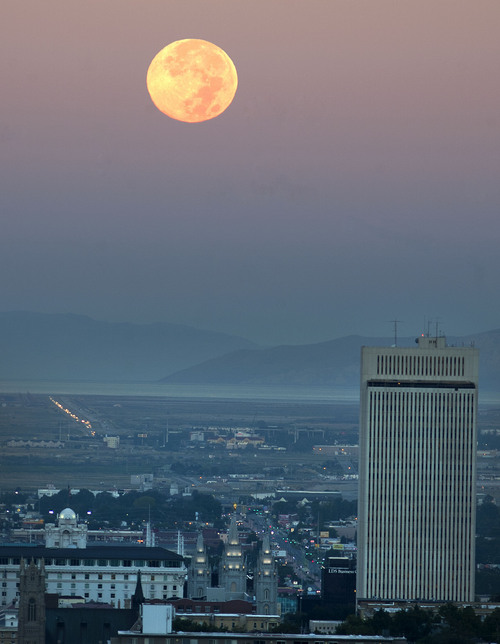This is an archived article that was published on sltrib.com in 2013, and information in the article may be outdated. It is provided only for personal research purposes and may not be reprinted.
Kennecott's landslide and spending cuts driven by federal sequestration helped put a midyear dent into Salt Lake County's economic recovery, which is still improving, just not as much as before.
Taxable sales in the county fell below expectations in the quarter ending June 30, prompting county financial analysts to lower their revenue forecasts for the year. Instead of the 7 percent growth rate foreseen in June, county income levels now are more likely to be 5.1 percent, finance officer Lance Brown told the County Council on Tuesday.
Even with that tempered outlook, he said sales-tax revenues remain higher than for the same period in 2012. Employment is up in every sector but government. And after three years of zero growth in property-tax receipts, the county expects to see a 1 percent boost this year.
Consultant Doug Macdonald, former chief economist for the Utah Tax Commission, added that "2014 could be a much better year" if residential housing construction doesn't lag behind expectations like it did this year.
Early predictions of close to 20 percent turned out optimistic. Taxes from residential construction are up a respectable 9 percent, Macdonald said, but that's not 20 percent. Still, he believes the trend looks good for the market to pick up next year.
Macdonald's economic analysis predicted overall taxable sales in 2014 will rise 6.2 percent. He attributed the bounce-back partly to the idea that "business-equipment sales will get a boost if Rio Tinto's landslide problems abate, production stabilizes and returns to normal levels."
Brown noted that sales taxes associated with wholesale durable goods fell 17.4 percent in the second quarter. Much of that involves outside businesses that equip and service Kennecott's system across the foothills of the Oquirrh Mountains. Those operations were scaled back significantly after the early April slide temporarily halted mining in the Bingham Canyon pit. Production was restored a week later, but at a fifth of the previous amount.
Military contracts, which slid because of sequestration, also figured into the decline in durable-goods sales, Brown added.
Twitter: @sltribmikeg Canyons zone accepted
A recommendation to create a zone specifically for resorts in Salt Lake County's canyons was among several proposals made by a grass-roots committee, which spent 15 months evaluating the ordinance known as FCOZ — for Foothills and Canyons Overlay Zone.
The "blue-ribbon commission" appointed by then-county Mayor Peter Corroon delivered its report Tuesday to the Salt Lake County Council.
Now comes the tricky part: crafting language that describes what can be done in a resort zone, winter and summer, and what boundaries there would be. The county planning staff is expected to have a revised ordinance available by early next year.







